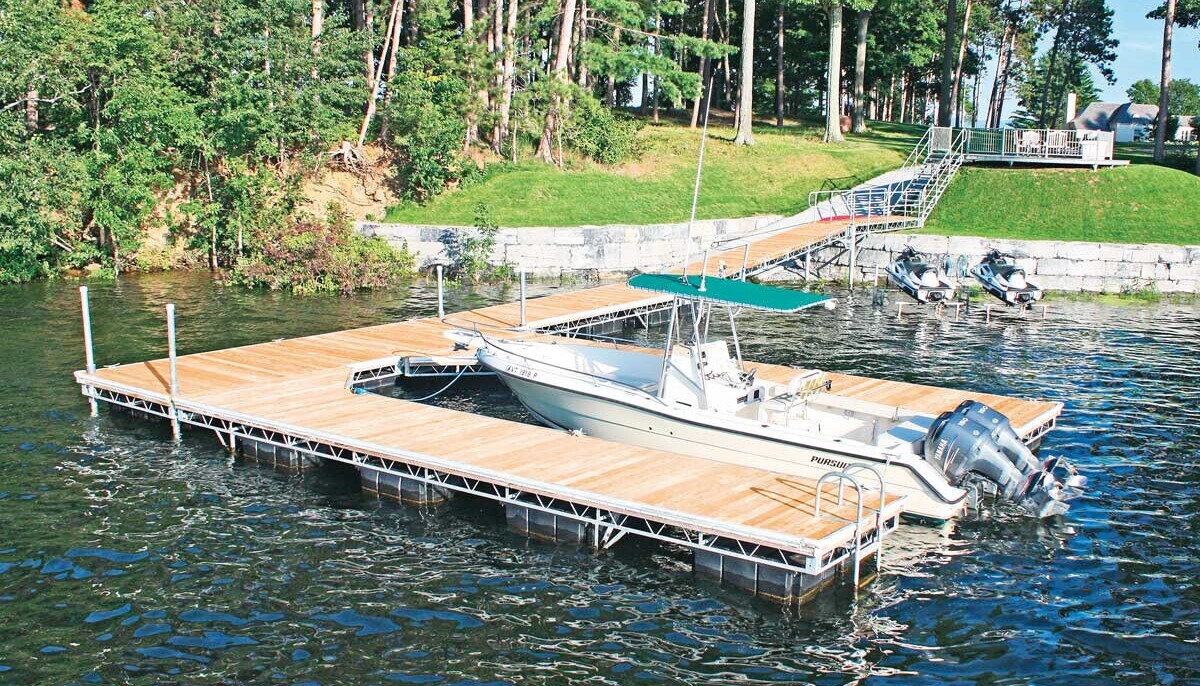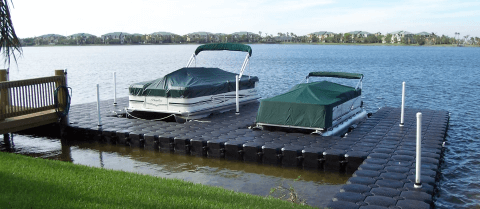Browsing the Options: Picking the Right Dock Company for Your Floating Dock Task
Browsing the Options: Picking the Right Dock Company for Your Floating Dock Task
Blog Article
Produce the Perfect Docking Remedy With Floating Docks
Floating docks present a functional remedy for a selection of maritime requirements, adapting perfectly to changing water levels and diverse vessel kinds. As we check out the necessary aspects that add to the performance of floating docks, numerous key aspects pertaining to stability and maintenance will emerge, elevating inquiries about how to optimize your docking experience.

Advantages of Floating Docks
Floating docks deal countless benefits that make them a suitable choice for different maritime applications. Unlike dealt with docks, floating docks surge and loss with the trend, making sure regular ease of access for vessels.
Furthermore, floating docks are typically much easier and quicker to set up compared to traditional set structures. Their modular layout allows for straightforward setting up and disassembly, facilitating upkeep and relocation when essential. This versatility is particularly useful for momentary applications or in environments where problems might alter.
Floating docks also tend to be extra eco-friendly, as they minimize disruption to the seabed and bordering water ecological communities. Their resilient nature decreases the threat of damage to marine life, promoting a much healthier environment. In addition, these docks can be tailored to accommodate numerous vessel sizes, making sure that they satisfy specific operational demands - floating docks.
Eventually, the combination of flexibility, ease of setup, and environmental factors to consider makes floating docks an extremely efficient solution for a wide variety of maritime demands.
Selecting the Right Products
Picking the proper products for floating docks is important to make sure long life, security, and longevity. The selection of materials directly affects the dock's performance in different environmental conditions, including direct exposure to water, sunshine, and potential wear from marine web traffic.
Usual products utilized for floating docks include aluminum, wood, and high-density polyethylene (HDPE) Light weight aluminum is light-weight, corrosion-resistant, and needs very little upkeep, making it an excellent choice for longevity. Its preliminary expense can be higher contrasted to other materials.
Wood, while aesthetically appealing and offering a typical appearance, can be prone to rot and bug damages if not effectively treated. Using pressure-treated timber or naturally durable varieties like cedar or redwood can alleviate these problems.
HDPE is a prominent choice as a result of its resistance to UV rays and chemicals, in addition to being eco friendly. floating dock builder. It is readily available and lightweight in numerous colors, enabling modification
Eventually, the right product choice will certainly depend upon specific needs, consisting of budget, wanted aesthetic appeals, and environmental factors to consider. Mindful evaluation of these factors will cause a durable and effective floating dock option.
Layout Factors To Consider for Security
When creating floating docks, making certain security is a basic element that can substantially influence their capability and safety. Stability in floating dock layout is influenced by different aspects, consisting of buoyancy, weight circulation, and the setup of parts.
Weight circulation is critical; evenly distributing tons throughout the dock protects against turning and boosts security. This can be attained via strategic placement of docking devices, such as cleats and fenders, as well as appropriate spacing of drifts. Furthermore, the measurements of the dock should be thoughtfully prepared. Bigger styles can supply enhanced security, specifically in rough water problems, while longer docks may need extra supports to stop drooping.
An additional essential factor to consider is their explanation the ecological impact, consisting of wave action and wind. Incorporating attributes such as sidewalls or skirting can help minimize the impacts of environmental pressures, maintaining security in adverse problems. Ultimately, a mix of thoughtful layout, product selection, and understanding of ecological elements will certainly yield a drifting dock that meets both security and safety demands.
Installation Tips and Strategies

Next, safeguard the needed licenses and follow neighborhood regulations, which might determine installment techniques and ecological considerations. Engage a qualified professional experienced in floating dock installments if needed. Use premium materials designed for aquatic settings to boost durability and long life.
When placing the dock, her comment is here align it parallel to the coastline to assist in easy access. Make certain that the anchoring system is durable, utilizing concrete blocks or helical supports to support the dock against wind and wave activity. It's crucial to account for seasonal water degree changes, including prospective ice movement in cooler environments.
Throughout the setup, verify the dock's floatation and security prior to settling the anchoring. Routinely examine the setup for any type of indications of wear or damage. By complying with these pointers and strategies, you can accomplish a safe and secure, practical, and cosmetically pleasing floating dock setup that meets your demands.
Upkeep and Treatment Guidelines
Caring and preserving for floating docks is crucial to extending their life-span and ensuring safe usage. Normal examinations should be carried out to recognize any kind of signs of wear, damage, or marine growth. Seek cracks, loose fittings, or tarnished locations on the dock's surface, as these problems can endanger architectural integrity.
Cleaning up is crucial. Use a pressure washing machine to get rid of algae, barnacles, and debris, which can build up gradually. For persistent development, take into consideration environmentally friendly cleaning agents that won't hurt aquatic life.
Additionally, examine the mooring lines and anchors often to guarantee they are totally free and safe from corrosion. Replace any kind of frayed or damaged lines quickly to preserve stability.
During extreme weather condition, such as tornados or freezing problems, take precautionary procedures. Secure the dock with extra mooring lines and, if viable, remove any detachable parts to prevent damages.
Conclusion
In final thought, the application of floating docks provides a efficient and flexible docking option suitable for numerous maritime applications. Their versatility to changing water levels, incorporated with a modular style, enables very easy modification and relocation. Selecting proper materials boosts both resilience and aesthetic charm, about his while careful consideration of security makes certain safety and long life. With correct setup and regular upkeep, floating docks can give reliable and reliable docking experiences for a large variety of vessels.
As we explore the crucial aspects that add to the performance of floating docks, several vital factors pertaining to stability and maintenance will emerge, elevating questions regarding just how to maximize your docking experience. Unlike repaired docks, floating docks increase and loss with the trend, ensuring consistent availability for vessels.When making floating docks, ensuring stability is an essential element that can dramatically affect their functionality and security. Stability in floating dock layout is affected by various elements, including buoyancy, weight distribution, and the arrangement of components. Ultimately, a combination of thoughtful design, material option, and understanding of ecological variables will certainly generate a drifting dock that satisfies both security and security requirements.
Report this page